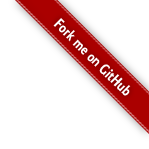Spring5参考指南: Resources
文章目录
Spring定义了Resource接口用来对资源的访问,一般来说资源有两种形式,一种是URL的形式从外部链接加载,一种是File的形式从系统本身查找。
Spring的Resource提供了如下接口:
public interface Resource extends InputStreamSource {
boolean exists();
boolean isOpen();
URL getURL() throws IOException;
File getFile() throws IOException;
Resource createRelative(String relativePath) throws IOException;
String getFilename();
String getDescription();
}
Resource继承了InputStreamSource接口,下面是其定义:
public interface InputStreamSource {
InputStream getInputStream() throws IOException;
}
内置Resource实现
Spring有如下几种内置资源实现:
- UrlResource
- ClassPathResource
- FileSystemResource
- ServletContextResource
- InputStreamResource
- ByteArrayResource
UrlResource
UrlResource封装了java.net.URL,可用于访问通常可通过url访问的任何对象,如文件、HTTP目标、FTP目标和其他对象。所有URL可以使用一个标准化前缀来表示一个URL类型。例如:
file:用于访问文件系统路径。
http:用于通过HTTP协议访问资源。
ftp:用于通过FTP访问资源。
ClassPathResource
表示从类路径加载资源。如果资源路径带上前缀ClassPath:,那么会隐式的解析为ClassPathResource。
注意,如果类资源文件是在文件系统中,则该资源实现会被解析为java.io.File, 如果是在Jar包中,则会使用java.net.URL来解析。
FileSystemResource
他是java.io.File和java.nio.file.Path的Resource实现,支持解析为File或者URL。
ServletContextResource
这是ServletContext的Resource实现,用于解释相关Web应用程序根目录中的相对路径。
InputStreamResource
InputStreamResource 是InputStream 的Resource实现。只有在其他Resource实现不可用的时候才考虑使用它。
和其他的Resource实现相反,它是一个already-opened resource的描述器,所以isOpen()会返回true。 如果你想保存资源描述器或者多次读取一个stream, 那么不要使用它。
ByteArrayResource
是byte array的Resource实现, 它创建了ByteArrayInputStream。
它对于从任何给定的字节数组加载内容都很有用,而不必求助于单次使用的InputStreamResource。
ResourceLoader
ResourceLoader用来返回Resource实例,下面是其定义:
public interface ResourceLoader {
Resource getResource(String location);
}
所有的 application contexts 都实现了ResourceLoader类。因此所有的application contexts 都可以用来获取Resource。
当在特定的应用程序上下文上调用getResource(),并且指定的位置路径没有特定的前缀时,将返回适合该特定应用程序上下文的资源类型。例如,假设对ClassPathXmlApplicationContext实例执行了以下代码片段:
Resource template = ctx.getResource("some/resource/path/myTemplate.txt");
在ClassPathXmlApplicationContext中,这个方法返回ClassPathResource,如果在FileSystemXmlApplicationContext中,方法返回FileSystemResource。 在WebApplicationContext, 方法返回ServletContextResource。 他会返回和ApplicationContext相对应的Resource实现。
当然,你可以强制ClassPathResource使用,而不管ApplicationContext到底是什么。这样做你需要添加classpath:前缀。如下:
Resource template = ctx.getResource("classpath:some/resource/path/myTemplate.txt");
同样的,你可以强制使用UrlResource通过添加标准的java.net.URL前缀。
Resource template = ctx.getResource("file:///some/resource/path/myTemplate.txt");
Resource template = ctx.getResource("https://myhost.com/resource/path/myTemplate.txt");
ResourceLoaderAware
ResourceLoaderAware接口是一个特殊的回调,表明该组件需要提供一个ResourceLoader的引用。 下面是ResourceLoaderAware的定义:
public interface ResourceLoaderAware {
void setResourceLoader(ResourceLoader resourceLoader);
}
当一个类实现了ResourceLoaderAware并被部署到application context,那么整个类就被识别为ResourceLoaderAware。 application context会去调用setResourceLoader(ResourceLoader)方法,并将其自身作为参数传入(所有的Spring application contexts 都实现了ResourceLoader 接口)。
在应用程序组件中,你也可以使用自动装载ResourceLoader,来替代使用ResourceLoaderAware接口。可以使用传统的constructor或者byType的自动装载模式。或者使用注解的方式。
资源作为依赖
如果想将静态资源注入到Bean中,可以简单的将String路径转换为Resource对象。 如果Bean定义了一个Resource类型的template属性,那么下面就是一个很简单的资源配置的例子:
@Data
public class BeanA {
private Resource template;
}
<bean id="myBean" class="com.flydean.beans.BeanA">
<property name="template" value="bean.properties"/>
</bean>
构造ClassPathXmlApplicationContext-快捷方式
ClassPathXmlApplicationContext提供了一个快捷方式来查找需要加载的资源路径。
只需提供一个字符串数组,该数组只包含XML文件本身的文件名(不包含前导路径信息),还提供一个类。然后,ClassPathXmlApplicationContext从提供的类中派生路径信息。
如下:
public static void main(String[] args) {
ApplicationContext ctx = new ClassPathXmlApplicationContext(
new String[] {"beanA.xml"}, BeanA.class);
}
下面是文件结构:
com/
flydean/
beans/
beanA.xml
BeanA.class
资源路径通配符
Ant-style Patterns
定义资源路径可以是用Ant-style的通配符,下面是 Ant-style patterns 的路径例子:
/WEB-INF/*-context.xml
com/mycompany/**/applicationContext.xml
file:C:/some/path/*-context.xml
classpath:com/mycompany/**/applicationContext.xml
classpath:前缀*
构造基于XML的application context,路径地址可以使用classpath*: 前缀,如下:
ApplicationContext ctx =
new ClassPathXmlApplicationContext("classpath*:conf/appContext.xml");
classpath* 和 classpath 有什么区别呢?
classpath* 会去查找所有匹配的classpath, 而classpath 只会找到第一个匹配的资源。
FileSystemResource注意事项
未连接到FileSystemApplicationContext的FileSystemResource(即,当FileSystemApplicationContext不是实际的ResourceLoader时)会按预期处理绝对和相对路径。相对路径相对于当前工作目录,而绝对路径相对于文件系统的根目录。
但是,由于向后兼容性(历史)的原因,当FileSystemApplicationContext是ResourceLoader时,这一点会发生变化。FileSystemApplicationContext强制所有附加的FileSystemResource实例将所有位置路径视为相对路径,不管它们是否以前导斜杠开头。实际上,这意味着以下示例是等效的:
ApplicationContext ctx =
new FileSystemXmlApplicationContext("conf/context.xml");
ApplicationContext ctx =
new FileSystemXmlApplicationContext("/conf/context.xml");
在实践中,如果需要真正的绝对文件系统路径,则应避免将绝对路径与FileSystemResource或FileSystemXmlApplicationContext一起使用,并通过使用file: URL 前缀强制使用UrlResource。以下示例说明了如何执行此操作:
// actual context type doesn't matter, the Resource will always be UrlResource
ctx.getResource("file:///some/resource/path/myTemplate.txt");
// force this FileSystemXmlApplicationContext to load its definition via a UrlResource
ApplicationContext ctx =
new FileSystemXmlApplicationContext("file:///conf/context.xml");
本节的例子可参考resources
更多教程请参考flydean的博客




 浙公网安备 33010602011771号
浙公网安备 33010602011771号